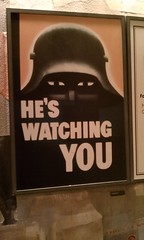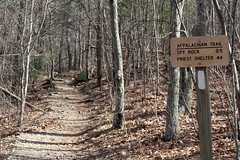
speaker: Andrea Resmini
He starts with a brief description of the movie The Name of the Rose, which is a bit of a medieval murder mystery involving a monastery library. The “library” is actually a labyrinth, but only in the movie. (The book is a little different.)
The letters on the arches represent the names of the places in the world, and are placed in the library where they would be in the world as it relates to Europe. They didn’t exactly replicate the world, but they ordered it like good librarians.
If you don’t understand the organizational system, it’s just a labyrinth. The movie had to change this because it wouldn’t work to have room after room of books covering the walls. We have to see the labyrinth to be able to participate in the experience, which can be different depending on the medium (book or movie).
Before computers, we relied on experts (people), books, and mentors to learn. With computers, we have access to all of them, at any time. We are constantly connected (if we choose) to streams of data, and the access points are more and more portable.
“Cyberspace is not a place you go to but rather a layer tightly integrated into the world around us.” –Institute for the Future
This is not the future. It’s here now. Facebook, Twitter, Foursquare… our phones and mobile devices connect us.
Think about how you might send a message? Email, text, handwritten, smoke signals, ouija… ti’s the same task, but with many different mediums.
What if someone is looking for a book? They could go to the circ desk, but that’s becoming less common. They could go to a virtual bookshelf for the library. Or they could go to a competitor like Amazon. They could do this on a mobile phone. Or they could just start looking on the shelves themselves, whether they understand the classification/organization or not. The only thing that matters is the book. They don’t want to fight with mobile interfaces, search results in the millions, or creepy library stacks. They just want the book, when they want it, and how they want it.
The library is a channel, as is the labeling, circ desk, website, mobile interface, etc. Unfortunately, they don’t work together. We have silos of channels, not just silos of information.
Think about a bank. You can talk to the call center employee — they can’t help you if it’s not a part of their scripted routines. You can’t start an online process and finish it in a physical space (i.e. online banking then local branch).
Entertainment now uses many channels to reach consumers. If you really want to understand the second and third Matrix movies, you have to be familiar with the accessory channels of information (comic books, video games, etc.). In cross-channel experiences, users constantly move between channels, and will not stay in any single one of them from start to finish.
More companies, like clothing stores, are breaking down the barriers to flow between their physical and virtual stores. You can shop on line and return items to the physical store, for example.
Manifesto:
- Information architectures are becoming open ecologies: no artifacts stand alone — they are all apart of the user experience
- users are becoming intermediaries: participants in these ecosystems actively produce and re-mediate content and meaning
- static becomes dynamic: ecologies are perpetually unfinished, always changing, always open to further refinement and manipulation
- dynamic becomes hybrid: the boundaries separating media, channels, and genres get thinner
- horizontal prevails over vertical: intermediaries push for spontaneity, ephemeral structures of meaning and constant change
- products are becoming experiences: focus shifts from how to design single items to how to design experiences spanning multiple steps
- experiences become cross-channel experiences: experiences bridge multiple connected media, devices and environments into ubiquitous ecologies












